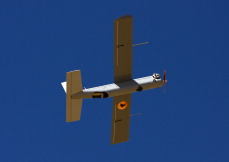WASHINGTON, Aug. 16, 2011 — The Navy Department is providing the market share for the nation’s nascent biofuel industry as part of a White House initiative to kick-start the alternative energy sector, administration officials announced today.
The Navy, in partnership with the departments of Energy and Agriculture, is working with the private sector to create a sustainable U.S.-based alternative energy industry as part of a plan President Barack Obama announced in March to reduce American dependence on foreign oil.
Navy Secretary Ray Mabus, along with Agriculture Secretary Tom Vilsack and Energy Secretary Steven Chu, announced the latest part of the plan in a conference call with reporters today.
Under the plan, the Navy, Agriculture and Energy departments will share equally in a $510 million investment over three years — estimated at half the private sector’s cost — in the production of advanced “drop-in” aviation and marine biofuels, which can be used with existing fuels to power military and commercial vehicles, they said.
The White House’s Biofuels Interagency Work Group and Rural Council will oversee the initiative with the simultaneous goal of boosting America’s rural economies, they said.
“America’s long-term national security depends upon a commercially viable domestic biofuels market that will benefit taxpayers while simultaneously giving sailors and Marines tactical and strategic advantages,” Mabus said.
“Having energy independence in the United States is one of the most important things we can do from a security standpoint,” he added.
The United States imports more than $300 billion in crude oil annually, and “price shocks and supply shocks” of the international oil market are “too much for the military to sustain,” Mabus said. Every dollar per barrel increase in oil adds $30 million annually to the Navy budget, he said.
“Today’s announcement not only leverages our home-grown fuel sources to support our national security, but it also helps advance the biofuels market, which ultimately brings down the cost of biofuels for everyone,” Mabus added.
The initiative is in line with Mabus’ goal to cut in half the Navy’s oil usage by 2025, and supply its growing use of biofuels, which the secretary estimated at 8 million gallons per year.
“The Navy can be the market,” Mabus said. “We have a big need for biofuels. It will make us better warfighters, it will save lives, and it will reduce a vulnerability in our military that we simply shouldn’t have.”
The Energy Department already supports 29 biofuels projects in which producers manufacture fuels from cellulosic feedstalks — wood, grasses and nonedible parts of plants, Chu said. Under the initiative, there can be no negative impact on U.S. food supply, they said.
The initiative is important, the secretaries said, to diversify the nation’s energy supply, remove risk from the burgeoning biofuels industry, and create economic opportunities in recession-hit parts of the country.
The departments plan to release a request for proposals soon from biofuel manufacturers, and Mabus said the Navy conducted the largest-yet biofuels request of 450,000 gallons in a bid last spring.
“There is a market there that is real, that is solid,” he said of producers, and added that it is growing enough that prices already are starting to decline.
The Navy will “repurpose existing funds” for its $170 million share of the investment, Mabus said.
“It’s a matter of setting priorities,” he added.
Source:
U.S. Department of Defense
Office of the Assistant Secretary of Defense (Public Affairs)

 von
von 